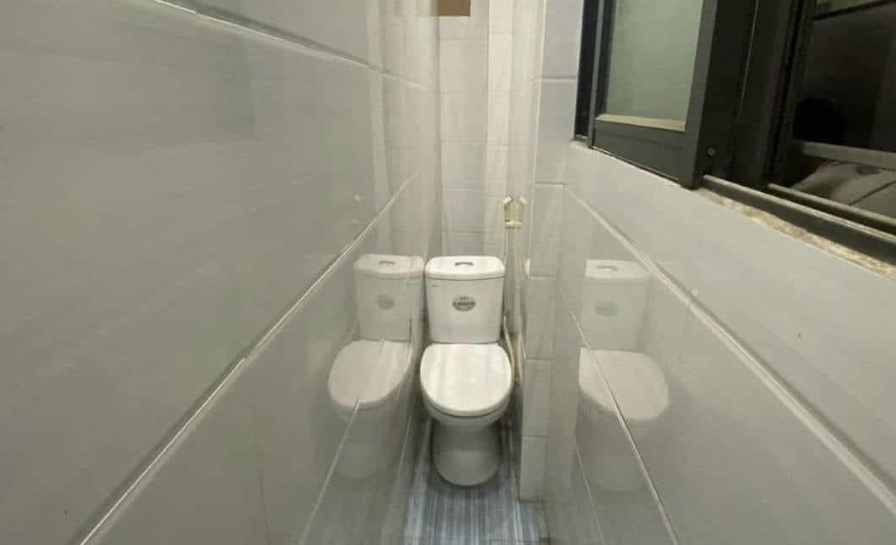Written by Jonathan Collins.
The government has introduced ultra-narrow bathroom stalls in an effort to address the obesity epidemic among federal employees. The latest federal initiative to keep employees fit involves bathrooms that are so snug, they could double as a personal challenge course. The hope is that by shrinking personal space, workers will be incentivized to trim down and, simultaneously, reduce the cost of their health insurance.
The logic here is as inventive as it is cramped. Federal employees, now faced with bathroom facilities so small you’d need to contort like a pretzel just to turn around, are expected to drop pounds and boost productivity. The theory is simple: less time spent lounging in the bathroom means more time spent being productive. This strategy combines the joys of reduced comfort with the thrill of forced fitness.
Critics argue that the new bathroom design might be a tad too innovative. After all, turning a necessary part of the workday into a competitive sport isn’t exactly the blueprint for a happy workforce. Nevertheless, the government presses forward, convinced that its latest move will revolutionize both employee wellness and budget management.
The Outrage Unfolds: Employees and Advocates Speak Out
Unsurprisingly, the response to these new stalls has been a chorus of disgruntled voices. Obesity advocates and employees alike are livid, calling out the government for what they see as a callous and ineffective solution. “It’s not a weight-loss program,” one outraged spokesperson declared, “it’s a public humiliation tactic masquerading as a health initiative.”
The employees themselves aren’t shy about sharing their discontent. “I always thought the government’s policies were tight, but this is taking it to a whole new level,” said one federal worker, clearly struggling to keep a straight face. “I’ve seen more elbow room in a phone booth!” The discomfort is palpable, and it’s hard not to feel that this approach is less about health and more about making a point—however small.
As the public outcry grows, questions arise about the true motives behind these diminutive bathroom designs. Are they really about employee wellness, or is this just a clever way to keep health coverage costs down while adding a new twist to workplace challenges? Either way, it’s clear that this initiative is sparking more debate than it is generating goodwill.
Budget-Friendly or Just Plain Uncomfortable?
Beyond the discomfort, the real kicker is the potential cost-saving angle. By cutting down on space and thereby reducing time spent in the bathroom, the government hopes to lower health care costs associated with obesity. It’s an approach that’s as economical as it is controversial.
Supporters argue that this tactic is a pragmatic way to address a serious issue while also saving taxpayer money. They believe that the cramped conditions will force employees to spend less time away from their desks, thus improving overall productivity and reducing health-related expenses. The idea of saving money by making bathroom visits a less enjoyable experience seems to be gaining traction among the powers that be.
On the flip side, this strategy may come with hidden costs. If employees are spending more time feeling stressed and uncomfortable, their productivity might not see the boost the government anticipates. It’s a gamble that could backfire, leaving the workforce feeling more discontented and less motivated.
Our Take: Why This Bathroom Strategy is a Tight Fit for the Public
So, what’s the final word on this cramped initiative? It’s hard not to view it as a misguided attempt to tackle a complex problem with a simplistic and uncomfortable solution. Turning bathroom breaks into a form of exercise and a cost-saving measure isn’t just impractical—it’s a prime example of how not to approach employee wellness.
By prioritizing budget concerns over employee comfort and health, the government risks alienating its workforce and undermining the very productivity it hopes to enhance. The strategy might be saving a few dollars now, but the long-term impact on morale and workplace satisfaction could be much more costly. The focus on making bathroom breaks a grueling experience, rather than providing real health support, is likely to lead to more frustration than fitness.
In the end, this policy serves as a stark reminder that sometimes the most innovative ideas are also the most flawed. When it comes to public health and employee well-being, a little more thought and a lot more empathy might go a long way.

